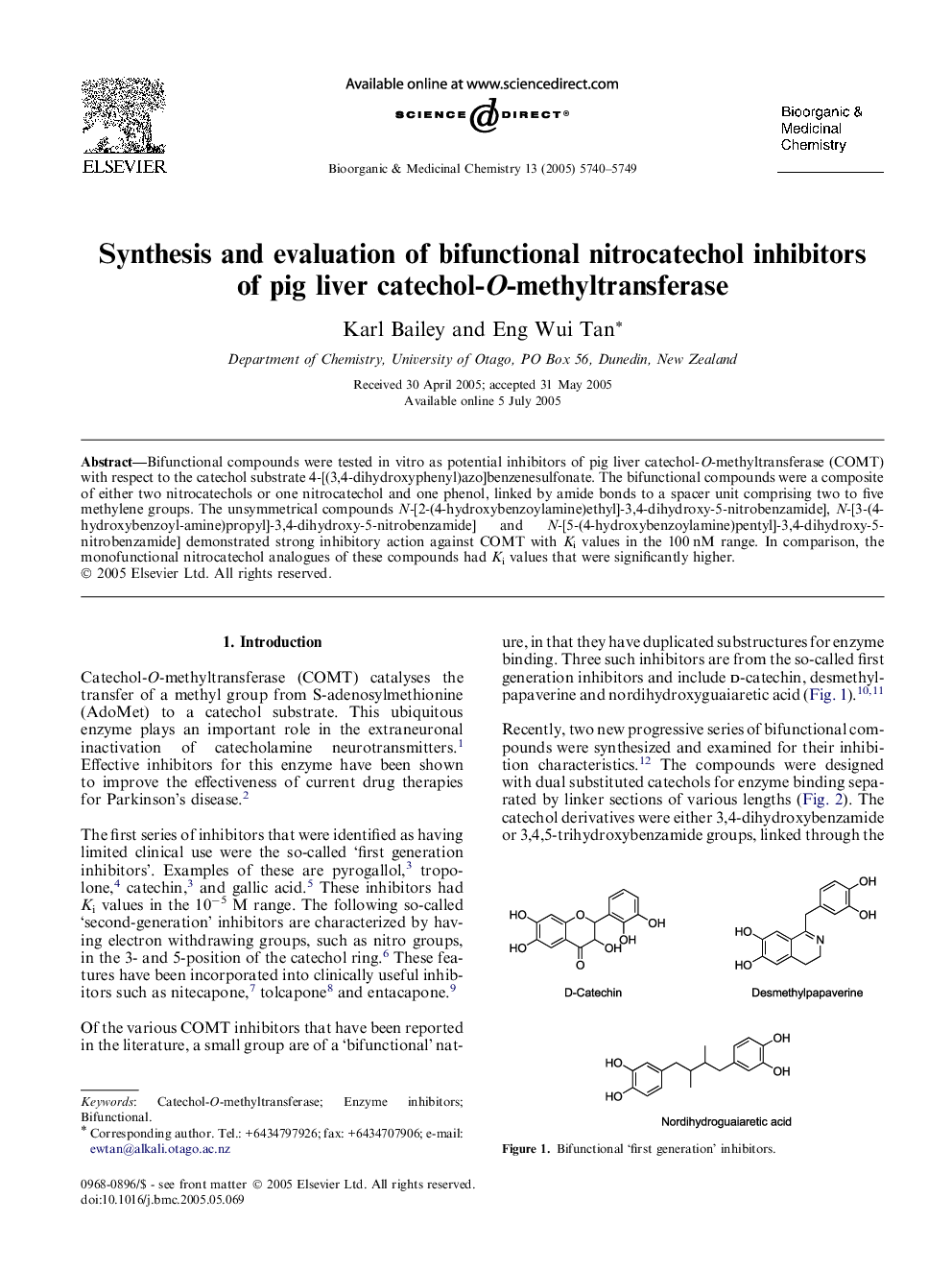| کد مقاله | کد نشریه | سال انتشار | مقاله انگلیسی | نسخه تمام متن |
|---|---|---|---|---|
| 1363410 | 981511 | 2005 | 10 صفحه PDF | دانلود رایگان |

Bifunctional compounds were tested in vitro as potential inhibitors of pig liver catechol-O-methyltransferase (COMT) with respect to the catechol substrate 4-[(3,4-dihydroxyphenyl)azo]benzenesulfonate. The bifunctional compounds were a composite of either two nitrocatechols or one nitrocatechol and one phenol, linked by amide bonds to a spacer unit comprising two to five methylene groups. The unsymmetrical compounds N-[2-(4-hydroxybenzoylamine)ethyl]-3,4-dihydroxy-5-nitrobenzamide], N-[3-(4-hydroxybenzoyl-amine)propyl]-3,4-dihydroxy-5-nitrobenzamide] and N-[5-(4-hydroxybenzoylamine)pentyl]-3,4-dihydroxy-5-nitrobenzamide] demonstrated strong inhibitory action against COMT with Ki values in the 100 nM range. In comparison, the monofunctional nitrocatechol analogues of these compounds had Ki values that were significantly higher.
A series of bifunctional compounds were tested in vitro as potential inhibitors of pig liver catechol-O-methyltransferase (COMT). The bifunctional compounds were a composite of either two nitrocatechols or one nitrocatechol and one phenol, linked by amide bonds to a spacer unit comprising two to five methylene groups. The unsymmetrical compounds demonstrated strong inhibitory action against COMT with Ki values in the 100 nM range. In comparison, the monofunctional nitrocatechol analogues of these compounds had Ki values that were significantly higher.Figure optionsDownload as PowerPoint slide
Journal: Bioorganic & Medicinal Chemistry - Volume 13, Issue 20, 15 October 2005, Pages 5740–5749